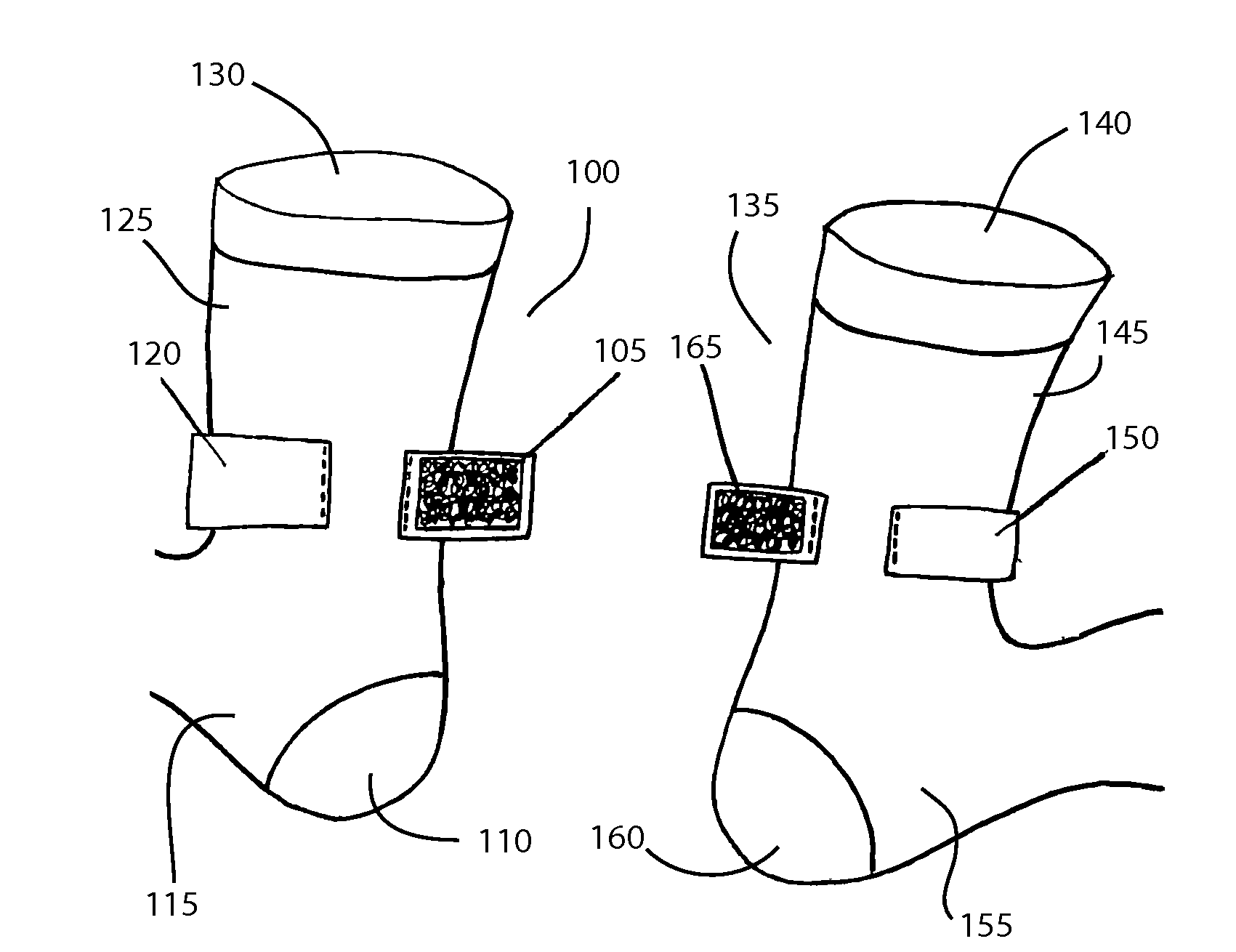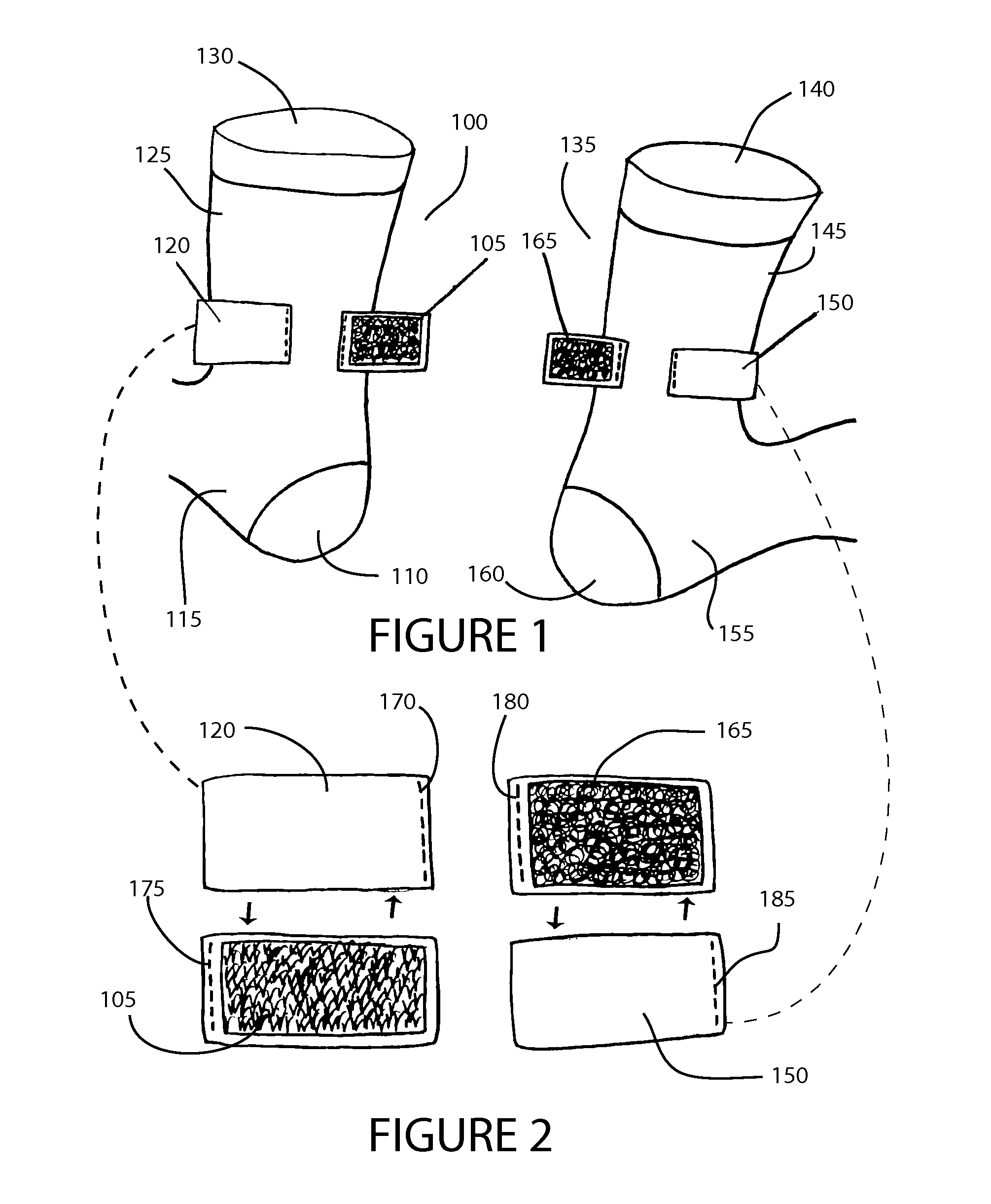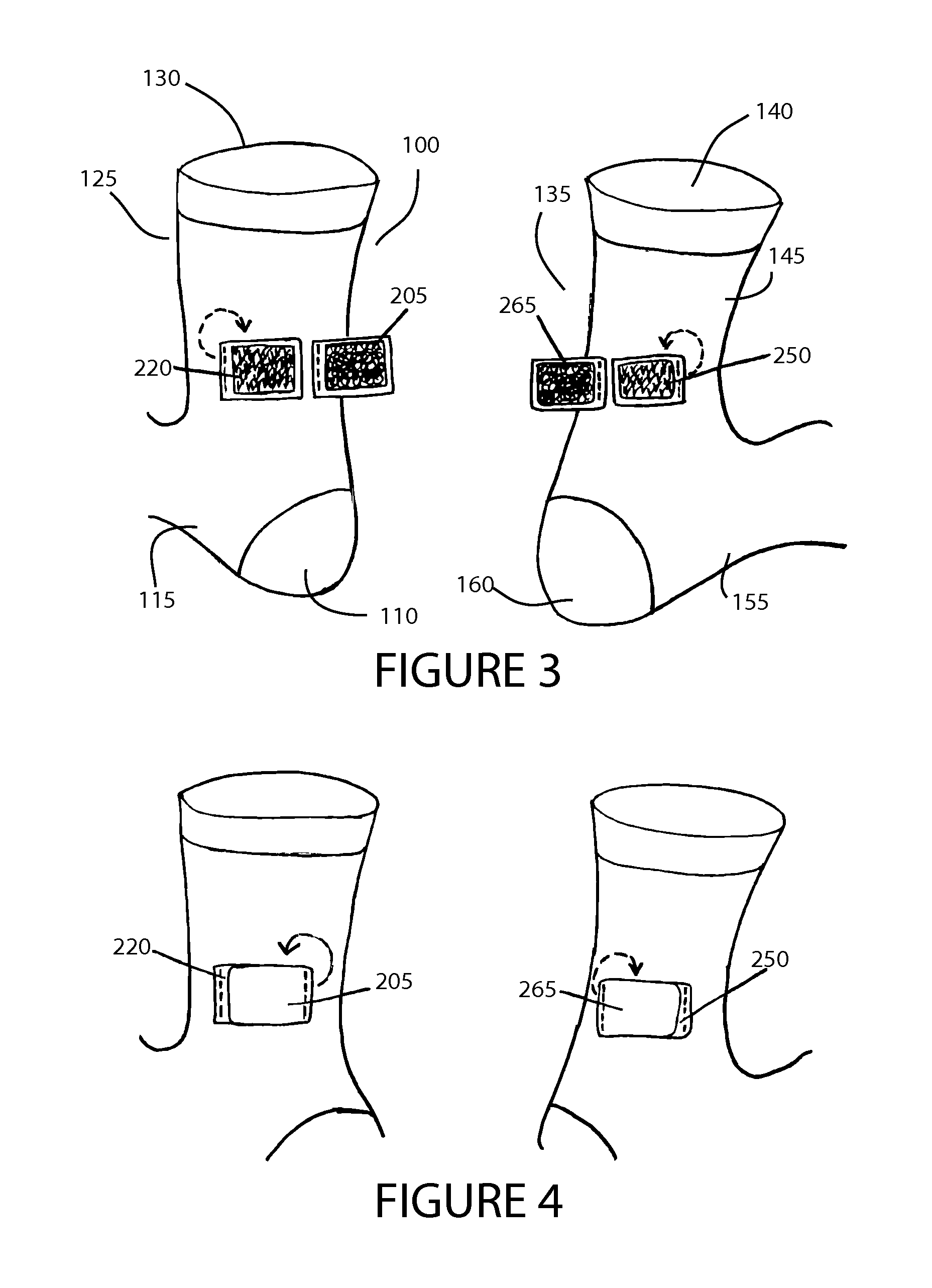Garments with releasable retainers
- Summary
- Abstract
- Description
- Claims
- Application Information
AI Technical Summary
Benefits of technology
Problems solved by technology
Method used
Image
Examples
Embodiment Construction
[0032]Referring to the FIGS. 1 through 4 and 7 through 9, in which like parts are indicated with the same reference numerals, various views of exemplary socks are shown. In the drawings, 100, 135 represent a sock, and together they represent a pair of socks. As is well known, a sock 100, 135 is a knitted or woven type of hosiery garment for enclosing the human foot, such as an infant's foot. A sock according to principles of the invention may be created from any of a wide variety of materials suitable for garments, including, but not limited to, cotton, wool, nylon, silk, acrylic, polyester, olefin, polypropylene, and spandex. Typically, the sock 100, 135, or at least the ankle portion 125, 145 exhibits some elasticity. The elasticity keeps the sock comfortably secured around an ankle.
[0033]Although a particular style and proportioned sock is shown, the invention is not so limited. The invention is not limited to any particular sock size or height. By way of example and not limitati...
PUM
 Login to View More
Login to View More Abstract
Description
Claims
Application Information
 Login to View More
Login to View More - R&D
- Intellectual Property
- Life Sciences
- Materials
- Tech Scout
- Unparalleled Data Quality
- Higher Quality Content
- 60% Fewer Hallucinations
Browse by: Latest US Patents, China's latest patents, Technical Efficacy Thesaurus, Application Domain, Technology Topic, Popular Technical Reports.
© 2025 PatSnap. All rights reserved.Legal|Privacy policy|Modern Slavery Act Transparency Statement|Sitemap|About US| Contact US: help@patsnap.com



